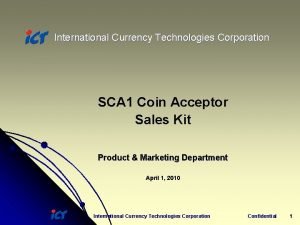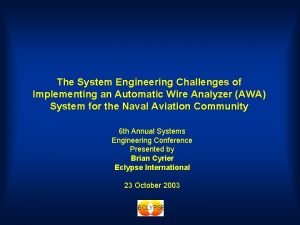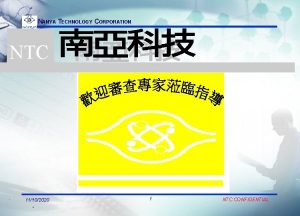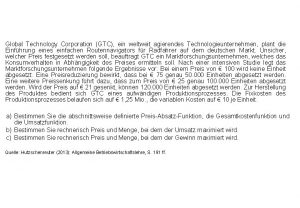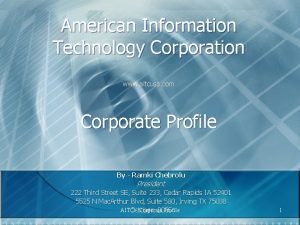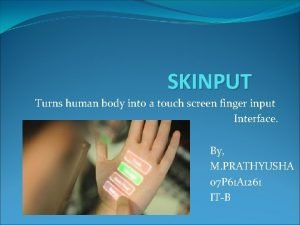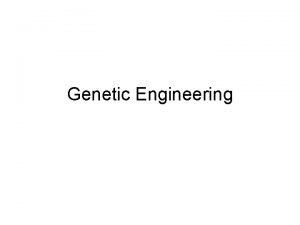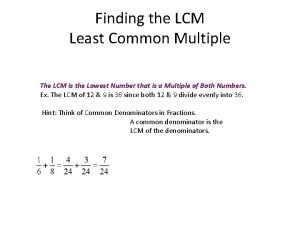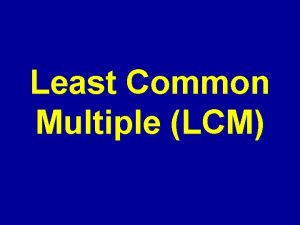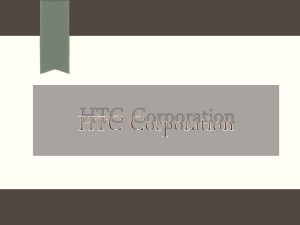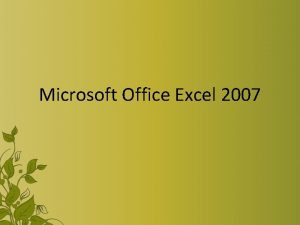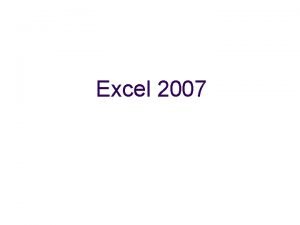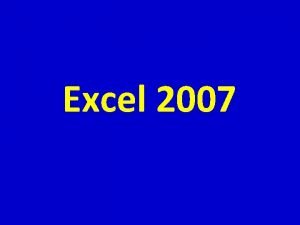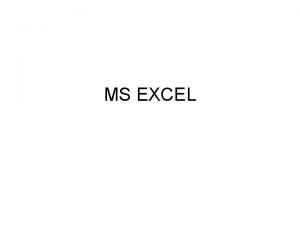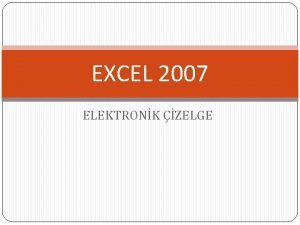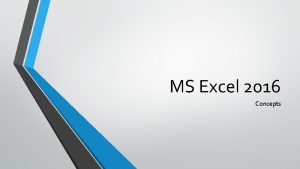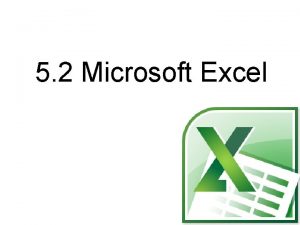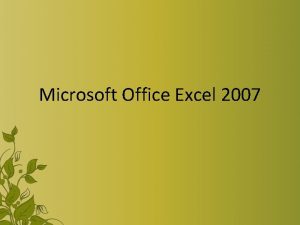LCM Introduction Excel Technology International Corporation LCM Applications

















- Slides: 17

LCM Introduction Excel Technology International Corporation

LCM Applications

LCD & LCM Differences n n Liquid Crystal Display - User must decide what kind of driver to use. LCD Module – Provides a PC Board. The driver chips are on the board ready to be used.

Construction of LCD The LCD (Liquid Crystal Display) is formed with 6~10µm thick nematic liquid crystal sandwiched between two glass plates with transparent electrode patterns, and polarizers stationed on the outside of the two glass plate. 1. Front Polarizer 2. Front Glass 3. Rear Glass 4. Rear Polarizer with Reflector 5. Sealing Glue 6. Edge Sealing Glue 7. Conductive Dot Between 2 Glass 8. ITO Electrode

Construction of LCD The LCD (Liquid Crystal Display) is formed with 6~10µm thick nematic liquid crystal sandwiched between two glass plates with transparent electrode patterns, and polarizers stationed on the outside of the two glass plate. 6. Edge Sealing Glue 8. ITO Electrode 9. Sio 2 Film 10. Alignment Film 11. Spacer 12. Liquid Crystal

Viewing Direction Top 12 O’Clock 9 O’Clock 3 O’Clock Right Left 6 O’Clock Bottom

Definition of viewing angle The LCD changes in contrast depending on the direction of viewing and the range within which the display can be recognized is limited. Taking this recognizable range as the viewing angle, it is defined as below: 1 2 Away from viewer Towards viewer Vertical area of definition Left Right Horizontal area of definition

Definition of viewing angle For TN Type LCD For STN Type LCD Top = 2 (12 O’Clock) 2 2 1 1 Bottom = 1 (6 O’Clock)

Dot configuration and dimensions Character Type Graphic Type E H F D B D C C G I F A A B Dot Size = A x B Character pitch = E Character size = H x I Size of display area = F x G Dot pitch (1) = C Dot pitch (2) = D

What is a TN (Twisted Nematic) Mode LCD 90 o n n n Twisted Nematic. This is the abbreviation of Twisted Nematic field effect mode. This is the mode which arranges the liquid crystal molecules by controlling their movement with electric voltage (electric field) so as to twist them by 90 o in the through the polarizer placed on the two upper lower plate of LCD by controlling the movement of the liquid crystal molecules. Almost all of medium and small type segment-display LCDs are in this mode, which is therefore this is the most common mode.

What is a STN (Super Twisted Nematic) Mode LCD ? Birefringence= Super Twisted Nematic 120 240 o JThis is the abbreviation of Super Twisted Nematic field effect mode. While the TN mode arrange the liquid crystal molecules by twisting them by 90 o , the STN mode arrange them by giving a still larger twist and provides display by birefringence effect of liquid crystal. JThe LCD structure in the STN mode is the same as that in liquid crystal, adopting birefringence effect, there is a color in the display and also a background color. In this STN mode, a wide-viewing angle view is obtained, and the STN offers a high-contrast display compared with the TN mode. Specially, it is widely used in large size full-dot matrix LCD module. JFor colors, it has two modes depending on the combination of polarizer, namely, yellow mode and gray mode.

Negative TN Mode Transmissive Type D-TN Mode Transmissive Type Shutter Type Color D-TN Color Reflective Type TN Mode Positive LCD Form of Display Transflective Type Reflective Type Transflective Type Colored Polarizer Transmissive Type Transflective Type Transmissive Type

LCM Construction Bezel (Metal Frame) LCD Connector 1. Rubber Connector 2. Pin Connector 3. Flexible Connector PCB 1. TAB 2. COF 3. COG Backlighting 1. LED 2. EL 3. C. C. F. L. LCD Driver I. C. 1. Package 2. Die Form 3. TAB Type

How to drive the LCD Com. & Seg.

How to drive the LCD Com. & Seg.

Products Numbering System Character Type E X 1 6 2 0 0 1 Y F Display Format Character LCM H= High Temp. N= Normal Temp. LCD series No. T=TN Y= Yellow green STN G= Silver gray STN Y B E=EL L=LED C=CCFL Series number Columns (C) x Lines (H) N L R: Reflective F: Transflective M: Transmissive N: Negative B=Bottom view 6 H T=Top view 12 H A= Amber B= Blue green R= Red W= White Y= Yellow green

Products Numbering System Graphic Type LCM E X 2 4 1 2 8 1 Y F H L Y B E=EL L=LED C=CCFL Dot number C x R B=Bottom view 6 H T=Top view 12 H LCD series No. H= High Temp. N= Normal Temp. Display Format Graphic LCM T=TN Y= Yellow green STN G= Silver gray STN R: Reflective F: Transflective M: Transmissive N: Negative A= Amber B= Blue green R= Red W= White Y= Yellow green
 International currency technologies
International currency technologies Kamal abichandani
Kamal abichandani Mnc company definition
Mnc company definition Awis navair
Awis navair Hendrickson international corporation
Hendrickson international corporation Phenolic pcb
Phenolic pcb Nanya technology corporation usa
Nanya technology corporation usa Environmental technology corporation
Environmental technology corporation Preis absatz funktion umsatzfunktion
Preis absatz funktion umsatzfunktion American information technology corporation
American information technology corporation Composite technology corporation
Composite technology corporation Applications of skinput technology
Applications of skinput technology Recombinant dna technology applications
Recombinant dna technology applications Recombinant dna technology applications
Recombinant dna technology applications Genetically modified crops have
Genetically modified crops have Recombinant dna technology applications
Recombinant dna technology applications Jazz multisensor blue eyes technology
Jazz multisensor blue eyes technology Technology applications
Technology applications
